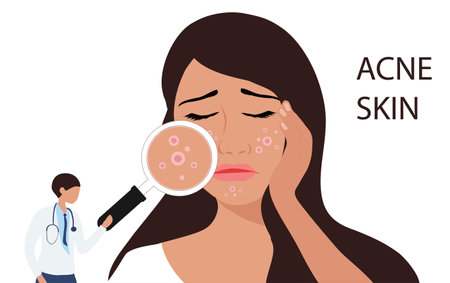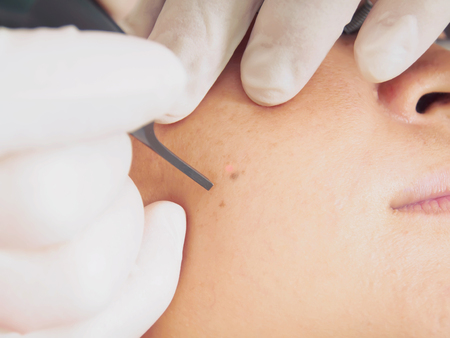Understanding Skin Tags and Their Removal
Skin tags, medically known as acrochordons, are small, benign growths commonly found on areas where skin rubs against skin or clothing, such as the neck, underarms, eyelids, and groin. In India, these harmless skin outgrowths are frequently observed in adults and elderly individuals, particularly among those who are overweight, diabetic, or have a family history of skin tags. The tropical climate and prevalence of metabolic conditions in the Indian population also contribute to their occurrence. While skin tags generally do not pose any health risks, many people seek their removal for cosmetic reasons or if they cause irritation, discomfort, or bleeding due to friction with clothing or jewellery. In certain cases, especially when skin tags change appearance or become painful, doctors may recommend removal to rule out other underlying skin conditions. Understanding the causes and indications for removal is essential for making informed decisions about treatment options and related costs in the Indian healthcare context.
Skin Tag Removal Procedures Available in India
When considering the cost and insurance coverage for skin tag removal in India, it is important to understand the various treatment options available. Indian dermatology clinics and general practitioners offer several standard procedures, each with its own benefits, costs, and suitability depending on the patient’s health and preferences. Below is a comprehensive overview of popular methods:
Cryotherapy
This procedure involves freezing the skin tag with liquid nitrogen, causing it to fall off after a few days. Cryotherapy is commonly offered by dermatologists in urban centres such as Mumbai, Delhi, and Bengaluru. It is minimally invasive and generally quick but may require more than one session for larger tags.
Cauterization
Cauterization uses heat or electrical current to burn off the skin tag. This technique is widely practiced across India, especially in multi-speciality hospitals and some local clinics. The process provides immediate results but may cause mild discomfort during the procedure.
Surgical Excision
Surgical excision is the physical removal of the skin tag using sterilised surgical instruments under local anaesthesia. This method is preferred for larger or multiple skin tags and is typically performed by qualified dermatologists or surgeons. Surgical excision offers instant results with minimal recurrence when performed correctly.
Home Remedies
In India, many people also rely on home remedies due to cultural preferences and accessibility concerns. Common approaches include applying over-the-counter topical solutions or traditional substances like neem oil, apple cider vinegar, or turmeric paste. While these methods are cost-effective and widely used in Indian households, they may not always be clinically effective or safe for everyone.
Comparison of Skin Tag Removal Options in India
| Method | Commonality in India | Cost Range (INR) | Professional Required | Recovery Time |
|---|---|---|---|---|
| Cryotherapy | High in metros | ₹500 – ₹2,000 per tag | Dermatologist | 1-2 weeks |
| Cauterization | Moderate to high | ₹700 – ₹2,500 per tag | Dermatologist/GP | 1 week |
| Surgical Excision | High for large tags | ₹1,000 – ₹5,000 per tag | Dermo/Surgeon | Few days to 1 week |
| Home Remedies | Very common in rural & urban areas alike | ₹50 – ₹500 (materials only) | No professional required | Varies; often slow or ineffective |
The choice of procedure often depends on factors such as budget, availability of qualified professionals, size and location of the skin tag, and personal preference. Understanding these options helps patients make informed decisions regarding their treatment journey within the Indian healthcare context.

3. Cost of Skin Tag Removal Across Major Indian Cities
When considering skin tag removal in India, it is essential to understand the price variations across different cities and clinic types. In metropolitan cities such as Delhi, Mumbai, and Bengaluru, the cost for skin tag removal is generally higher compared to tier-2 cities like Pune, Jaipur, or Kochi. This difference is primarily attributed to factors such as clinic infrastructure, dermatologist expertise, and overall cost of living in these urban centres.
Price Analysis: Metro Cities vs. Tier-2 Cities
In metros like Delhi, Mumbai, and Bengaluru, the average consultation fee for a dermatologist ranges between ₹500 to ₹1500 per visit. The actual procedure cost for removing a single skin tag can vary from ₹800 to ₹2500 depending on the technique used (e.g., cauterisation, laser removal, cryotherapy) and the reputation of the clinic. Some premium clinics may charge even higher if advanced laser technology or anaesthetic services are included.
Tier-2 City Pricing Trends
In contrast, clinics in tier-2 cities typically offer more affordable rates. Consultation charges usually fall between ₹300 and ₹800, while the cost for removing a single skin tag often ranges from ₹500 to ₹1200. However, patients should note that specialised cosmetic dermatology services may be limited in smaller towns, sometimes necessitating travel to bigger cities for more complex cases or preferred technologies.
Factors Influencing Price Differences
The key drivers for these price differences include doctor qualifications, clinic accreditation status, available medical equipment, and city-specific operational costs. Additionally, packages for removing multiple skin tags might offer better value and are commonly provided by leading clinics in both metro and non-metro areas.
Overall, individuals seeking skin tag removal should compare service quality alongside pricing and consider consultation charges as part of the total expenditure. It is advisable to request a detailed cost breakdown from clinics beforehand to avoid unexpected expenses during the treatment process.
4. Factors Influencing the Cost of Skin Tag Removal
When considering skin tag removal in India, it is crucial to understand the various factors that contribute to the overall cost. Pricing can vary significantly from one clinic to another, and several key elements play a role in determining how much you will pay for this cosmetic procedure. Below is a detailed breakdown of these factors to help you make an informed decision.
Clinic Reputation and Location
The reputation of the clinic and its geographical location are major determinants of cost. Renowned clinics situated in metropolitan cities like Mumbai, Delhi, or Bangalore often charge higher fees compared to smaller towns or lesser-known establishments. This difference is mainly due to advanced facilities, higher operational costs, and increased demand in urban areas.
Doctor’s Expertise and Experience
The qualifications and expertise of the dermatologist or cosmetic surgeon performing the procedure also impact pricing. Highly experienced doctors with specialised training may command a premium fee for their services, ensuring greater safety and desirable results for patients.
Type of Procedure
Several methods are available for skin tag removal, including laser therapy, cryotherapy (freezing), electrosurgery (burning), and surgical excision. Each technique has its own cost implications:
| Procedure Type | Description | Average Cost per Tag (INR) |
|---|---|---|
| Laser Removal | Quick, minimal scarring, suitable for sensitive areas | ₹1,000 – ₹2,500 |
| Cryotherapy | Freezing technique, fast healing time | ₹500 – ₹1,500 |
| Electrosurgery | Burns off the skin tag using electric current | ₹800 – ₹2,000 |
| Surgical Excision | Physical removal with minor stitches if necessary | ₹700 – ₹2,000 |
Number and Size of Skin Tags
The total number of skin tags being removed directly affects the final bill. Many clinics offer package deals for multiple removals rather than charging per tag. Larger or more complicated skin tags may also require advanced techniques or anaesthesia, increasing the overall expense.
| No. of Skin Tags Removed | Estimated Package Cost (INR) |
|---|---|
| 1-3 tags | ₹1,000 – ₹4,000 |
| 4-10 tags | ₹3,500 – ₹8,000 |
| 11-20 tags | ₹7,000 – ₹15,000 |
Additional Charges
Other potential costs include consultation fees (usually ranging from ₹300 to ₹1,000), follow-up visits, topical anaesthetics, and post-procedure medications. Always clarify the total estimated expenses during your initial consultation to avoid surprises later on.
5. Health Insurance Coverage for Skin Tag Removal in India
When considering the cost of skin tag removal in India, it is crucial to understand how health insurance policies address such procedures. In the Indian healthcare system, most health insurance providers draw a clear distinction between treatments deemed medically necessary and those classified as cosmetic. This differentiation has a direct impact on whether or not your insurance policy will cover the expenses associated with skin tag removal.
Medically Necessary Skin Tag Removal
Health insurance companies in India generally provide coverage for skin tag removal only if the procedure is considered medically necessary. For example, if a skin tag is causing pain, bleeding, recurrent infections, or significant discomfort that affects daily activities, your dermatologist may recommend its removal for medical reasons. In such cases, you will usually need to submit supporting documents, such as a doctor’s prescription and a detailed medical report, to your insurer. Approval for coverage is subject to the terms and conditions of your specific policy.
Cosmetic Skin Tag Removal
On the other hand, if the primary reason for skin tag removal is cosmetic—such as improving appearance or boosting self-confidence—most Indian health insurance policies exclude coverage for the procedure. Cosmetic treatments are generally regarded as elective and non-essential, and therefore not eligible for reimbursement under standard health plans. It’s important to carefully review your policy wording or consult with your insurance provider to clarify what is classified as “cosmetic” in their terms.
Key Points to Remember
Indian consumers should be aware that:
- Insurance claims for skin tag removal require thorough documentation proving medical necessity.
- Pre-authorization from the insurer may be required before undergoing the procedure.
- Cosmetic procedures are almost always excluded from basic health insurance plans in India.
- Some premium or specialized health plans may offer limited coverage for certain dermatological conditions—check with your provider.
Ultimately, understanding the fine print of your health insurance policy can help you make an informed decision about managing both the cost and the process of skin tag removal in India.
6. Things to Consider Before Skin Tag Removal
When planning for skin tag removal in India, it is important to take several factors into account to ensure a safe and satisfactory experience. Below are some practical considerations that can help guide your decision-making process.
Doctor Selection
Choose a qualified dermatologist or cosmetic surgeon with experience in skin tag removal procedures. In India, many patients prefer seeking referrals from family or friends, or checking reviews on local health platforms such as Practo. It is advisable to verify the doctor’s credentials and the clinic’s registration status with relevant medical authorities.
Aftercare Guidance
Proper aftercare is crucial to avoid complications such as infection or scarring. Your doctor should provide clear instructions regarding wound care, hygiene, and signs of possible infection. Follow-up visits may be necessary, so consider selecting a clinic within easy reach for convenience.
Understanding Local Beliefs and Taboos
In Indian culture, some communities may have traditional beliefs about skin marks and interventions. For example, elders might suggest home remedies or discourage removal due to superstitions linked to luck or health. It is important to respect these perspectives while making an informed decision based on medical advice. Open discussions with family members can help manage expectations and reduce social stigma related to cosmetic procedures.
Insurance and Financial Planning
Before undergoing the procedure, clarify the cost breakdown with your healthcare provider and check if any part of the treatment can be covered under your health insurance plan. Some policies only cover medically necessary removals rather than cosmetic ones. Understanding these nuances can prevent unexpected expenses.
By considering these practical aspects—doctor selection, aftercare, cultural sensitivities, and financial planning—you can approach skin tag removal in India with confidence and clarity.


